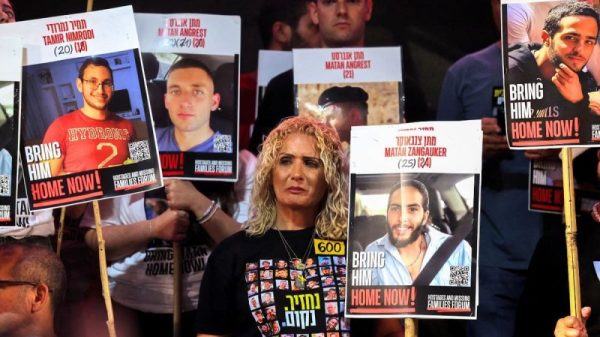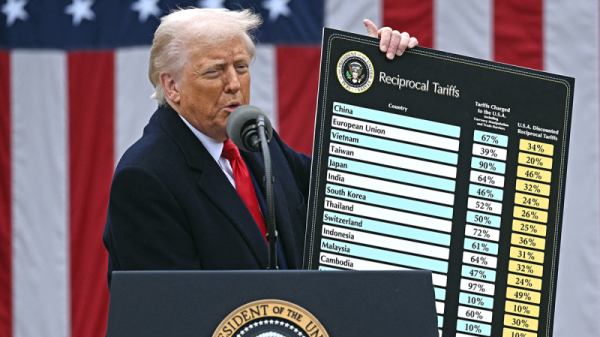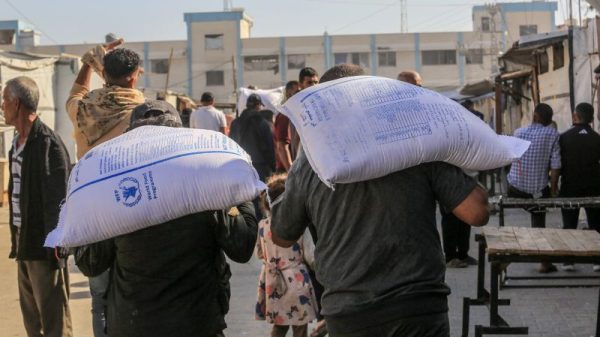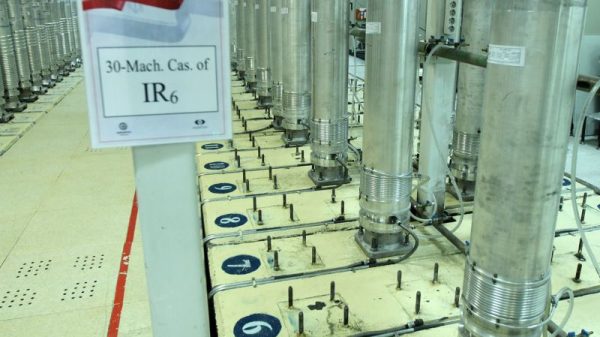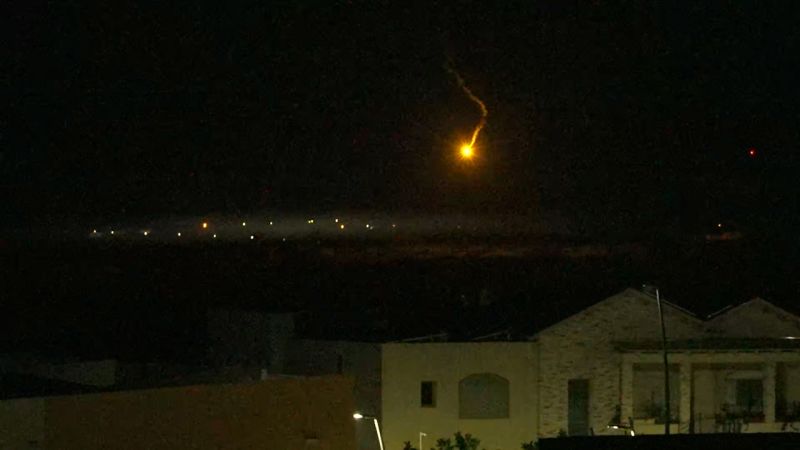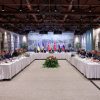Hamas fighters and Israeli forces engaged in limited clashes inside Gaza on Sunday as the Israeli military ramped up airstrikes on the Palestinian enclave ahead of what its spokesperson described as the “next stage” of its war on the militant group.
Hamas claimed its fighters had destroyed two Israeli military bulldozers and a tank in an ambush near the Gazan city of Khan Younis, forcing Israeli troops to retreat without their vehicles. The Israel Defense Forces confirmed its forces had been operating inside Gaza during the incident, and said an IDF tank struck militants who had fired onb its troops.
The episode appeared to be one of the first skirmishes between the two sides on the ground inside the strip since war broke out after Hamas’ deadly October 7 attack on Israel which killed more than 1,400 people. The clashes came as the IDF prepares for a potential ground operation in Gaza, amassing huge numbers of troops at the border and pounding the densely populated enclave with near-constant airstrikes in the last two weeks.
Officials at several hospitals in Gaza said they were overwhelmed with casualties on Sunday, with one describing a “bloody day” and another hospital scaling back dialysis treatments amid electricity and fuel shortages. More than 4,600 people have been killed in Gaza since Israel’s retaliation for the Hamas attack began more than two weeks ago, the Gazan health ministry said.
The US government has pressed Israel to delay its ground operations in Gaza to allow for the release of more Hamas hostages and aid into Gaza, according to two sources briefed on the discussions. The Friday release of two Americans held by Hamas signaled the possible freeing of more of the around 200 believed to be kidnapped by the militant group after its deadly attacks two week ago.
Israel has offered no timeline for the possible ground offensive on Gaza, but military officials have repeatedly told troops an incursion is imminent.
“We will increase our strikes, minimize the risk to our troops in the next stages of the war, and we will intensify the strikes, starting from today,” IDF spokesman Daniel Hagari said on Saturday. Hagari added that Israeli forces will “continue to destroy terror targets ahead of the next stage of the war, and are focusing on our readiness to the next stage.”
An IDF soldier died and three were others were injured during preparations for the Gaza ground operation, an Israeli Defense spokesman said Sunday.
The US and its allies have urged Israel to be strategic and clear about its goals during any ground operation in Gaza, warning against a prolonged occupation and placing a particular emphasis on avoiding civilian casualties.
The leaders of Spain and the Netherlands spoke to Israeli Prime Minister Benjamin Netanyahu Sunday, reiterating support for Israel but urging restraint.
“I reiterated my condemnation of Hamas terrorist attacks against Israel and its right to defend itself against them, within the limits of international and humanitarian law,” Spanish Prime Minister Pedro Sanchez wrote on X, formerly known as Twitter.
“Israel must do everything possible to prevent civilians from becoming victims of the fight against Hamas,” Dutch Prime Minister Mark Rutte posted on X. “Regional escalation must also be avoided at all costs. All this also requires restraint on the part of Israel in the use of force.”
UN independent experts have warned that Israeli actions in Gaza could result in “crimes against humanity.” “The complete siege of Gaza coupled with unfeasible evacuation orders and forcible population transfers, is a violation of international humanitarian and criminal law. It is also unspeakably cruel,” the experts said in a statement Thursday.
Increasing violence
Israel’s military carried out dozens of airstrikes on Hamas targets late Sunday, the Israel Defense Forces said.
A senior Israeli official meanwhile ruled out the possibility of a ceasefire for Gaza, amid ongoing US and Qatari efforts to free hostages held there by Hamas.
“Humanitarian efforts cannot be allowed to impact the mission to dismantle Hamas,” the official also said.
Violence has also flared in the occupied West Bank. The IDF on Sunday launched an airstrike on the Al-Ansar mosque in the West Bank refugee camp of Jenin, which it said was being used by militant groups to plan for “an imminent terror attack.” It would not say whether the strike came from a jet, in what would be the first fighter jet strike in the West Bank in nearly two decades.
Three people were killed in the Israeli strike, the Palestinian Ministry of Health said in a statement on Sunday. Two people were also killed following clashes in the West Bank cities of Toubas and Nablus, it said.
The IDF also said an Israeli tank “accidentally fired and hit an Egyptian post” Sunday near two countries’ border. Egypt said some border guards suffered minor injuries. The IDF apologized for the incident that took place in the area of Kerem Shalom and said it was investigating the matter.
Kerem Shalom is one of Israel’s two border crossings with Gaza. It has been closed since the Israelis imposed a “complete siege” on the enclave. The area also came under attack on October 7 when Hamas militants went on a killing spree against civilians after they bulldozed through the Gaza border.
In pictures: The deadly clashes in Israel and Gaza
Since the war erupted, Israel authorities have placed additional restrictions on movement of Palestinians living in the West Bank, and attacks by Israeli forces and settlers have surged.
At least 90 people have been killed in the occupied Palestinian territory since October 7, according to the Palestinian Ministry of Health.
Telling hospitals to evacuate
In a statement, the IDF confirmed it had dropped the flyers, but said there was “no intention to consider those who have not evacuated from the affected area of fighting as a member of the terrorist group.”
The IDF “treats civilians as such, and does not target them,” the statement added.
Israeli war planes have been pounding Gaza, leveling entire neighborhoods, including schools and mosques. Israel says it strikes Hamas targets and that the group has used civilians as human shields.
As of Sunday, Israeli airstrikes have killed 4,651 people in Gaza, including more than 1,900 children and 1,023 women, according to the Palestinian Ministry of Health in Gaza. More than 14,245 people have been wounded, it added.
In northern Gaza, more than 1 million residents have been told by Israel to leave their homes and move to the south.
Israel has also ordered the evacuation of more than 20 hospitals in northern Gaza where thousands of patients are being treated, according to the United Nations and the Palestinian Red Crescent, which say the order could be tantamount to a death sentence.
The IDF has said it does not target hospitals, though the UN and Doctors Without Borders say Israeli airstrikes have hit medical facilities, including hospitals and ambulances.
“It’s impossible for any hospital in the world to admit this number of injured,” he said.
“There is no room or hospital beds for these injuries, the injured are at the doors of the operating theaters and on top of each other, each waiting their turn for an operation and the situation is catastrophic,” he said.
Insufficient aid
However, the trucks did not bring in fuel, which is vital for running hospitals and treating water in the isolated territory, according to UNRWA spokesperson Juliette Touma.
The delivery follows an initial convoy of 20 trucks carrying food, water, medicine and medical supplies on Saturday.
But aid workers and international leaders have warned that much more is needed to combat the “catastrophic” humanitarian situation in the enclave that is home to more than 2 million people.
WHO director general Tedros Adhanom Ghebreyesus has stressed that “the needs are far higher” than the aid people in Gaza have received.
The Ministry of Health in Gaza said the initial aid convoy constituted “only 3% of the daily health and humanitarian needs that used to enter the Gaza Strip before the aggression.”
One UN official warned on Sunday that the UN’s fuel supply in Gaza will run out in three days. “Without fuel, there will be no water, no functioning hospitals and bakeries,” Philippe Lazzarini, commissioner general for the United Nations Relief and Works Agency for Palestine Refugees in the Near East (UNRWA), said. “Without fuel, aid will not reach many civilians in desperate need.”
Citing an acute shortage of food, water, power, and medical supplies that is pushing civilian lives in Gaza “to the edge of catastrophe,” the UN’s World Food Programme (WFP) said it urgently requires $74 million to sustain its emergency response in Gaza for the next 90 days.
Wider conflict
As it prepares for the next stage of war, the Israeli military has warned other regional actors against getting involved in the conflict.
Conricus, the IDF spokesperson, said Sunday the Lebanese militant group Hezbollah is “playing a very dangerous game” that could drag Lebanon “into a war that it will gain nothing from.”
Conricus said Hezbollah has been attacking Israeli positions near the Lebanon border, which had led to both civilian and military casualties.
In response, the IDF has used tanks, drones, artillery, and infantry to strike various Hezbollah infrastructure, as well as Hezbollah squads manning anti-tank missiles, he added.
On Sunday, Israel’s Ministry of Defense and the IDF announced the expansion of a state-funded evacuation plan to 14 additional communities in northern areas near the border with Lebanon.
The evacuation, which is voluntary, was initially rolled out on Monday for 28 communities. Around 123,000 civilians had been evacuated from their homes in northern and southern Israel as of Friday.
This is a breaking news story and will be updated












